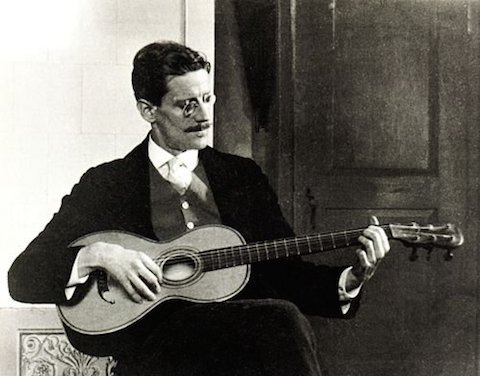Last week we sparked some heated debate (and some typical internet vitriol) with a post featuring isolated drum tracks from six of rock’s best drummers. Well, here we go again, this time with isolated bass tracks…. Bear in mind that the bassists featured here are some of the top players in rock who actually have bass tracks available online. There are many more I’d love to hear out of the mix—and no shortage of jazz, reggae, funk, and soul bassists I deeply dig. If you don’t see your favorite player here… really, don’t take it personally.
The bass guitar tends to be a forgotten instrument, sometimes not even missed when it’s gone (think Black Keys, The Doors), but despite the success of the rare bass-less band, it’s hard to imagine some of the songs represented here without the fundamental thump and groove of well-played basslines. We begin with John Deacon’s bassline for Queen and David Bowie’s “Under Pressure,” above. As we mentioned in a recent post on that song’s evolution, Stylus named this the #1 bassline of all time.
I don’t know what that accolade is worth, but the bassline is at least one of the most recognizable, thanks in no small part to Vanilla Ice. In the context of Queen, Deacon’s perhaps best known for the pounding stomp of “Another One Bites the Dust,” one of many songs he wrote for the band. He has very deliberately disappeared from the spotlight since Freddie Mercury’s death, but his tasteful, melodic playing is in no danger of being forgotten.
Led Zeppelin’s John Paul Jones, on the other hand, refuses to leave the stage, for which the several dozen musicians he’s toured and recorded with since Zeppelin’s demise are all grateful. Currently one-third of supergroup Them Crooked Vultures (with Dave Grohl and Queens of the Stone Age’s Josh Homme), Jones also plays mandolin (on Zep’s “Going to California,” for example), lap steel, and this triple-necked monster. For all his continued relevance into the 21st century, Jones’s sometimes smooth, sometimes burly basslines for Led Zeppelin, such as the unforgettable “Ramble On” riff above, will be his enduring legacy. One would have to be a hell of a bass player to keep up with John Bonham, and John Paul Jones is exactly that. He got his start playing jazz at age 15, and while still a teenager, played in a jazz-rock collective that included John McLaughlin (whom Jeff Beck has called “the best guitarist alive”). Want to learn how Jones does it? Check out this bass lesson with the master himself.
When the subject of rock bassists arises, Geddy Lee’s name will invariably come up. Like his bandmate Neil Peart, Lee’s musicianship astounds, his prog-rock stylings seem inimitable, except perhaps by Primus’ Les Claypool (who Lee names as one of his favorites). Bass magazine No Treble calls Rush’s “YYZ” (above) “one of the greatest bass lines of all time.” It’s not exactly my cup of tea, but I do know at least one bass player who left for Berklee College of Music hating Rush, then came back listening to this song over and over in hushed awe. Not everyone loves Lee’s over-the-top high pitched vocals, but one has to admire the fact that he plays basslines like this while singing some of the most philosophical lyrics in rock, courtesy of drummer Peart.
The last two bass tracks feature bassists who, like Lee, are also singers. No one pulls that off with more grace and style than Paul McCartney. In the bassline to The Beatles “Come Together” (above), you can hear the deep, resonant tone of McCartney’s semi-hollow Hofner violin bass (many of which have been “nicked” over the years). Of McCartney’s playing, John Lennon once said, “Paul was one of the most innovative bass players ever. And half the stuff that is going on now is directly ripped off from his Beatles period.” In my own bass-playing days, I certainly stole my share of ideas from McCartney—or more probably, his basslines were etched into my music brain, and my fingers automatically plucked out McCartney-style patterns. Music Radar puts “Come Together” at the top of a list of “Paul McCartney’s 12 greatest Beatles bass performances,” for the “spooky, sinuous, throbbing and groovy” track above, “as original as it gets.”
Our isolated drum tracks post happened to feature the other rhythmic halves of every player on this list except John Deacon, and while this wasn’t exactly by design, it’s no surprise to me that’s how it worked out. A great rhythm section works as a closely-aligned team, finding locked grooves, creating emphasis and punctuation, building structures and spaces for lead players to fill. A drummer like the Police’s Stewart Copeland needed a bassist as precise yet passionate as Sting. Very few other bands have successfully fused punk, jazz, and reggae rhythms into a greater whole, a feat accomplished in part because of Sting’s versatility as a player. From the muted “train engine” punk of “Next to You” to the left-field pop of “Message in a Bottle” (above), Sting’s aggressive playing, often fretless, mostly finger-picked—to quote that reputable source Uncyclopedia—“makes him better than all other musicians combined by 12 orders of magnitude, and that’s a pop fact.”
But seriously, he’s good, and so are dozens of other rock bassists who don’t appear above. Name your favorites, and if you find their bass tracks online, share ‘em! Alright, let the bass slugfest begin, and be sure to check out No Treble’s “Isolated Bass Track Week” posts, with tracks from undisputed masters of the instrument like James Jamerson and Jaco Pastorious.
Related Content:
Isolated Drum Tracks From Six of Rock’s Greatest: Bonham, Moon, Peart, Copeland, Grohl & Starr
Paul McCartney Offers a Short Tutorial on How to Play the Bass Guitar
The Story of the Bass: New Video Gives Us 500 Years of Music History in 8 Minutes
Josh Jones is a writer and musician based in Durham, NC. Follow him at @jdmagness


